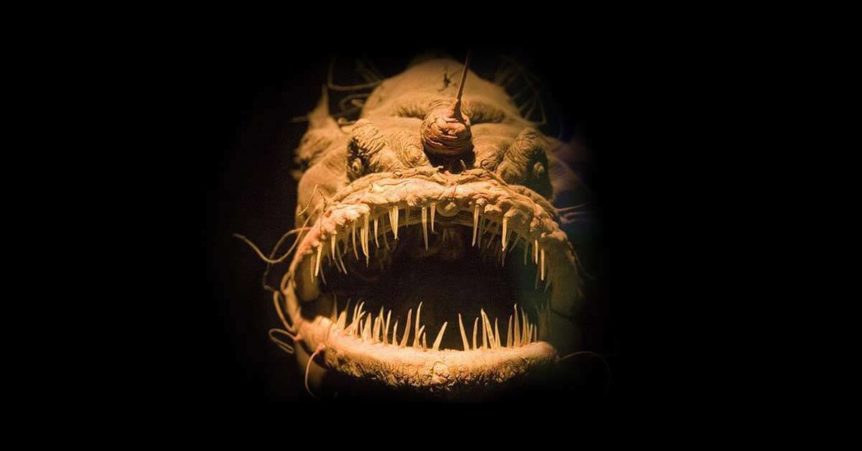All things bright and beautiful
All creatures great and small
All things wise and wonderful
The Lord God made them all
I want to start with a tricky question: Are all God’s works fit for children? Are there areas of creation that you believe are not suitable for children? There are probably readers who would immediately say, “You might as well ask, ‘Can God be trusted with our children?’ Certainly all creation is fit for children! All God’s works give him praise and are therefore fit for children. It is ridiculous and even irreverent to say otherwise.”
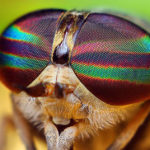 On the other hand, some readers will probably answer, “There are some aspects of creation that require maturity. For example, we don’t tell our kids about sex until they are a little older, and there are some scary animals that might give them nightmares. It is ridiculous to think otherwise, and perhaps even irreverent.”
On the other hand, some readers will probably answer, “There are some aspects of creation that require maturity. For example, we don’t tell our kids about sex until they are a little older, and there are some scary animals that might give them nightmares. It is ridiculous to think otherwise, and perhaps even irreverent.”
This question turns out to be more difficult that it appears on the surface, but the opinions are matters of personal scruples from one parent to the next, and from one culture to the next. We cannot deal adequately with every facet here. My intention is to try to focus on science education and the advantages of introducing children and students to the full spectrum of God’s living creatures and their behaviors, even the parts that are shocking.

You may be wondering why. Is this necessary? I will argue that it is important because it reflects the assumptions we bring to teaching science. These assumptions either knit students to God and his works, or perpetuate assumptions that render young students fearful of or repulsed by nature. This makes them just that much more theologically enfeebled because they never had the opportunity to wrestle with the idea that God is the author of horrifying aspects of the animal kingdom.
Seeing God as an artist
The idea of seeing God’s creation as his art has become a favorite metaphor for thinking about him. God is an artist—the proto-artist and the model for all human artists to follow. Jacques Maritain, the 20th century philosopher, wrote, “In the sense in which the Gospel says: Unus est bonus, Deus [There is only one who is good, God], so we may say Unus est artifex, Deus [There is only one Artist, God].”
Poet Lucy Shaw goes further,
“God was the first Quilter of prairies, the primal Painter (night skies, ferns, thunderheads, snow on cedars), the archetypal metal Sculptor (mountain ranges, icebergs), the Composer who heard the whales’ strange, sonorous clickings and songs in his head long before there were whales to sound them, the Playwright who plotted the sweeping drama of Creation, Incarnation, Redemption, the Poet whose Word said it all.” – Beauty and the Creative Impulse
All artists today, believers and non-believers, derive their artistic impulse from God’s original acts of creation-art, an outflowing of his original imagination. Just as a human artist takes delight in his finished work, so God delighted in his finished creation, declaring it “very good.”
Now, a gifted artist can make works that are bright, lovely, comedic, or noble. That same artist can also make works that are dark, sinister, tragic, or portraying ignoble things.
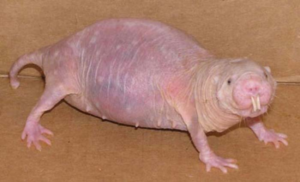 Shakespeare wrote comedies, histories, and tragedies. Surely Shakespeare himself wept over the deaths of Romeo and Juliet, and then at the final curtain said to himself, “that was so good!”
Shakespeare wrote comedies, histories, and tragedies. Surely Shakespeare himself wept over the deaths of Romeo and Juliet, and then at the final curtain said to himself, “that was so good!”
Mozart composed both the awe-inspiring Requiem Mass. He also composed 12 variations on the tune we know today as Twinkle, Twinkle, Little Star.
The same is true for all great painters, composers, poets, and sculptors: they make art that is both grand and glorious and art that portrays melancholy or grief, major and minor keys, bright and dark colors. Why should God not be the same? Or better, don’t human artists derive their variety of expression from God who did it first?

When we survey the range of God’s creation, what do we see? Of course there are majestic lions, stately elephants, cuddly kittens, humorous geese, agile gazelles. But there are also poisonous snakes, scraggly hyenas, wicked-looking spiders, nightmarish Angler Fish, the simply ugly naked mole rat. Like the artists we are familiar with, God’s palette contains bright colors and dark. God has as much of an artist’s satisfaction in the creepiness of scorpion, whose pinchers and stinger he made, as he does in the placidity of a ducks or the playfulness of meerkats.
What we do not want to do is pronounce judgment on God’s works that we do not like. Worse, we do not want to begin to rationalize that the good, loving, friendly God we claim to believe in would never create such ugly or horrible creatures. The risk is that we attribute these creatures to the devil or say they are part of the curse of Adam and Eve following the Fall of man, instead of giving proper credit to the supreme artist who made them.
Avoiding a storybook experience of creation
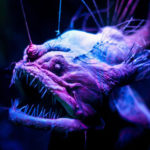 This is where my disfavor for the above-mentioned children’s hymn comes in, and the cleaned up, truncated, you-can’t-handle-the-truth lesson it presents us as we think about teaching science. If our lessons on zoology avoid the creepy, the slimy or the violent, if their encounter with the world of animals is only those of the petting zoo, then we are doing modern students a disservice. It’s worse: we perpetuate, in our students and ourselves, a denialist, storybook experience with creation which will not serve them in the modern world.
This is where my disfavor for the above-mentioned children’s hymn comes in, and the cleaned up, truncated, you-can’t-handle-the-truth lesson it presents us as we think about teaching science. If our lessons on zoology avoid the creepy, the slimy or the violent, if their encounter with the world of animals is only those of the petting zoo, then we are doing modern students a disservice. It’s worse: we perpetuate, in our students and ourselves, a denialist, storybook experience with creation which will not serve them in the modern world.
When it comes to engaging with God’s creation, a mature teacher who is trying to help parents rear children into adults will give students opportunities to wrestle with their own—let’s call them animal prejudices—and hopefully arrive at a framework that includes parts of creation they find unpleasant nevertheless encompassed in the domain of God’s good works.
This is not a new thing. These two 19th-century poems by William Blake fit nicely into this discussion. Compare the sweet cuddly lamb with the terrifying “tyger”:
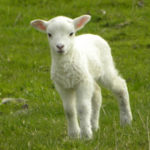 The Lamb
The Lamb
Little Lamb who made thee?
Dost thou know who made thee?
Gave thee life & bid thee feed.
By the stream & o’er the mead;
Gave thee clothing of delight,
Softest clothing wooly bright;
Gave thee such a tender voice,
Making all the vales rejoice!
Little Lamb who made thee
Dost thou know who made thee?
Little Lamb I’ll tell thee,
Little Lamb I’ll tell thee!
He is called by thy name,
For he calls himself a Lamb:
He is meek & he is mild,
He became a little child:
I a child & thou a lamb,
We are called by his name.
Little Lamb God bless thee.
Little Lamb God bless thee.
 The Tyger
The Tyger
Tyger Tyger, burning bright,
In the forests of the night;
What immortal hand or eye,
Could frame thy fearful symmetry?
In what distant deeps or skies.
Burnt the fire of thine eyes?
On what wings dare he aspire?
What the hand, dare seize the fire?
And what shoulder, & what art,
Could twist the sinews of thy heart?
And when thy heart began to beat,
What dread hand? & what dread feet?
What the hammer? what the chain,
In what furnace was thy brain?
What the anvil? what dread grasp,
Dare its deadly terrors clasp!
When the stars threw down their spears
And water’d heaven with their tears:
Did he smile his work to see?
Did he who made the Lamb make thee?
Tyger Tyger burning bright,
In the forests of the night:
What immortal hand or eye,
Dare frame thy fearful symmetry?
Did the same God who make the lamb also make the tyger? Blake asks. The poet draws our attention to this. The obvious answer is Yes, God did make the tiger with all of its ferocity.
Maybe Jesus is more than just the meek and melancholy giver of good gifts we like to assume. Maybe he loves adventure stories like us! Maybe his eye flashed with a thrill when he sharpened the tiger’s teeth to a point!
Our response: modeling wonder and fascination for all creation
Toddlers have not learned what to be afraid of. As they grow, they see how adults respond to the world. When they see people running in fear from rats, screaming at the sight of a roach, or, like Indiana Jones, just “hating snakes,” they learn to do the same. On the other hand, when they see respected adults showing fascination and wonder at every kind of creature, praising God for his handiwork, marveling at the unique features and abilities of every species, such enthusiasm will be contagious.
Let us model wonder, fascination, and a robust confidence in the doctrine of the goodness of creation for our students. Let us lead them boldly to study the world God made. In studying his works, we honor him who made them.
Watch for Part 2 of this topic in which we will explore Fecundity, Predation, and Parasitism, and what these mean for our theological reflection!

